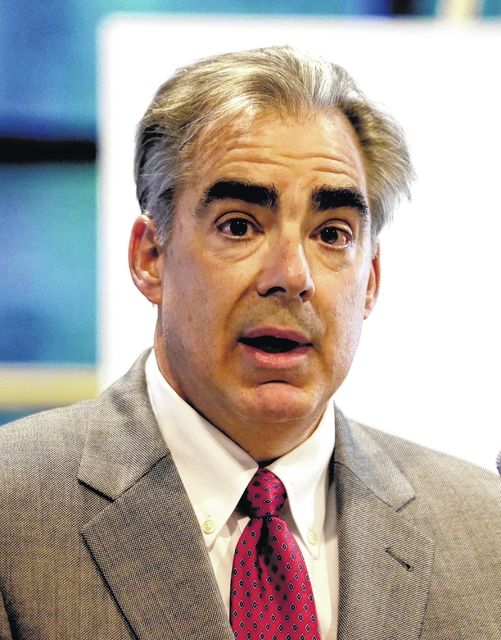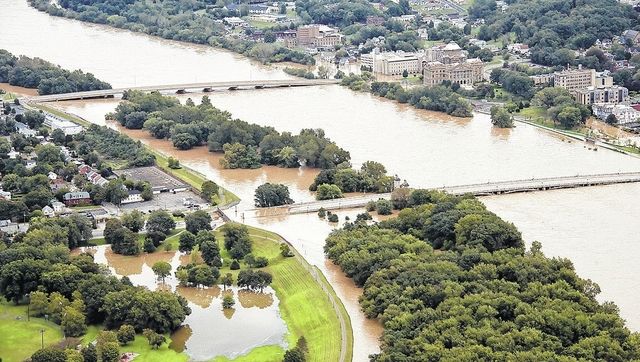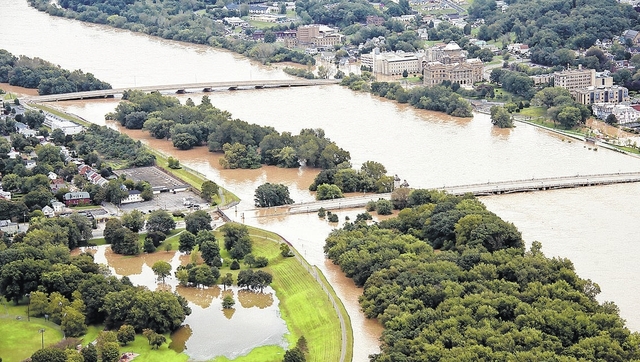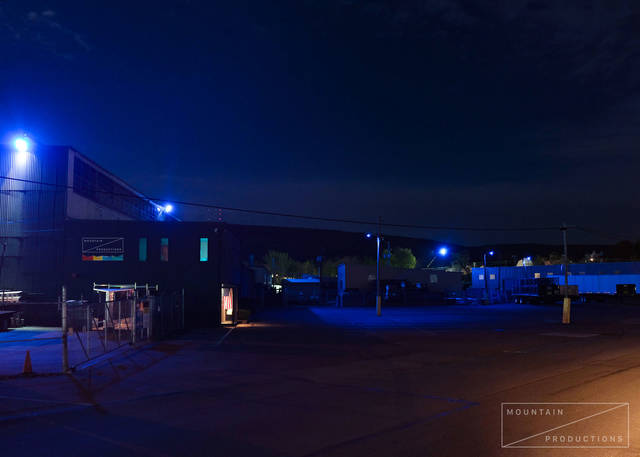The Wyoming Valley Levee fee is rising this year, impacting 14,153 Luzerne County property owners who are protected by the flood-control system along the Susquehanna River.
The amount of the fee increase will range from $16.56 to $33.12 per year for residential properties and from $33.12 to $536.64 annually for commercial, industrial and tax-exempt buildings. Payments are based on the tax assessment of structures — not land — categorized in six value ranges.
The fee is the county Flood Protection Authority’s only revenue stream to fulfill its mission of maintaining the 16-mile flood-control system so it’s primed for activation when the river rises. The fee has not increased since it was implemented in 2009 to end reliance on county government funding.
Authority board members decided to increase the fee earlier this year after months of analysis and discussion because revenue wasn’t keeping pace with expenditures, said authority Executive Director Christopher Belleman.
“We didn’t just do this on a whim. We really looked at this very hard over the last year,” Belleman said.
Fee payment boundary lines were based on which properties were impacted by the 1972 Agnes Flood, which was the record flood until 2011. These properties are in Edwardsville, Exeter, Forty Fort, Hanover Township, Kingston, Luzerne, Plymouth, Pringle, Swoyersville, West Wyoming, Wyoming and Wilkes-Barre.
To figure out the increase, property owners must identify their fee category based on the county’s assessed value of their structures, which are listed as “improvements” in property records. There are six categories — two for residential and four for commercial, industrial and tax-exempt properties, which are subject to the levee fee even though they are immune from real estate taxation.
Here are the details on the residential increase:
• 9,338 residential structures assessed under $100,000 will be charged $63.43, which reflects an annual increase of $16.56.
• The remaining 3,065 residential properties assessed at $100,000 or more will be billed $126.87, or $33.12 more per year.
The fees for those in the commercial/industrial/tax-exempt category:
• 517 buildings assessed under $100,000 — $126.87, or $33.12 more.
• 638 structures assessed from $100,000 to $249,999 — $404.36, or $178.92 more.
• 357 buildings assessed from $250,000 to $749,999 — $808.72, an increase of $357.72.
• 238 structures assessed at $750,000 or more — $1,213.08, or $536.64 more.
‘Not sustainable’
An increase was needed because an estimated average $1.89 million will be needed annually over the next five years to safely and efficiently operate and maintain the levee system, and the fee was generating approximately $1.2 million each year, Belleman said.
“The last two years, we ran a deficit, and that’s not a sustainable model,” he said.
If the levee is not maintained to continue meeting strict standards set by the Army Corps of Engineers, the flood-control system could be decertified, Belleman said.
Decertification would cause flood insurance rates to skyrocket for levee-protected property owners because the Federal Emergency Management Agency would evaluate flood risk in their areas as if a levee did not exist on flood insurance maps, he said.
For example, the owner of a levee-protected property in Kingston with $350,000 in flood insurance coverage — $250,000 for the structure and $100,000 for contents — currently pays about $500, he said. That annual insurance premium would be about $5,308 if the levee is decertified, said Belleman.
And the flood insurance premium for a levee-protected home insured for $200,000 with another $80,000 for contents would rise from approximately $476 to $4,245 under the decertification scenario.
Rising expenses
Where does the fee revenue go?
Using 2017 as an example, the $1.8 million in expenditures includes $767,085 for employee wages and benefits.
In addition to Belleman, the authority employs 11 — an executive assistant, mitigation specialist and nine workers who handle levee maintenance, including electrical work.
Other budgeted expenses include:
• $327,560 in administrative costs such as accounting and legal services, engineering assistance and office rent.
• $316,150 in operating costs for fuel, equipment and capital improvement.
Capital projects will be an ongoing focus because the levee is a complex system involving more than a wall, said Belleman.
The system includes eight electrical substations with 27 transformers and nine miles of underground and overhead transmission lines. There are 13 pump stations with 39 deep-well pumps that handle drainage from the land side of the levee when it can no longer naturally feed into the Susquehanna during a flood.
This year, the authority must spend approximately $110,000 to inspect and pump-test 123 relief wells in Kirby Park and other areas in Kingston and Hanover Township. These wells prevent seepage from forcing a path through the levee during flooding, Belleman said.
Next year, the levee walls and top will be surveyed to ensure there is no settling, which should cost about $20,000. An inspection of more than 100 pipes that run through the levee is scheduled for 2019 and has cost $150,000 in the past, he said.
All these inspections are required every five years, and the cited costs don’t include spending for any flagged repairs or maintenance expenses, Belleman said.
The levee fee bills typically are issued in October of the year they are due, but they will be mailed June 1 this year because the authority needs the revenue sooner to coincide with the timing of expenses.
2017 bills will be due in 60 days, or by Aug. 1, before delinquent charges are added.
2018 bills will be mailed Feb. 1, which will become the permanent mailing date going forward.
For other local news stories, click here.






